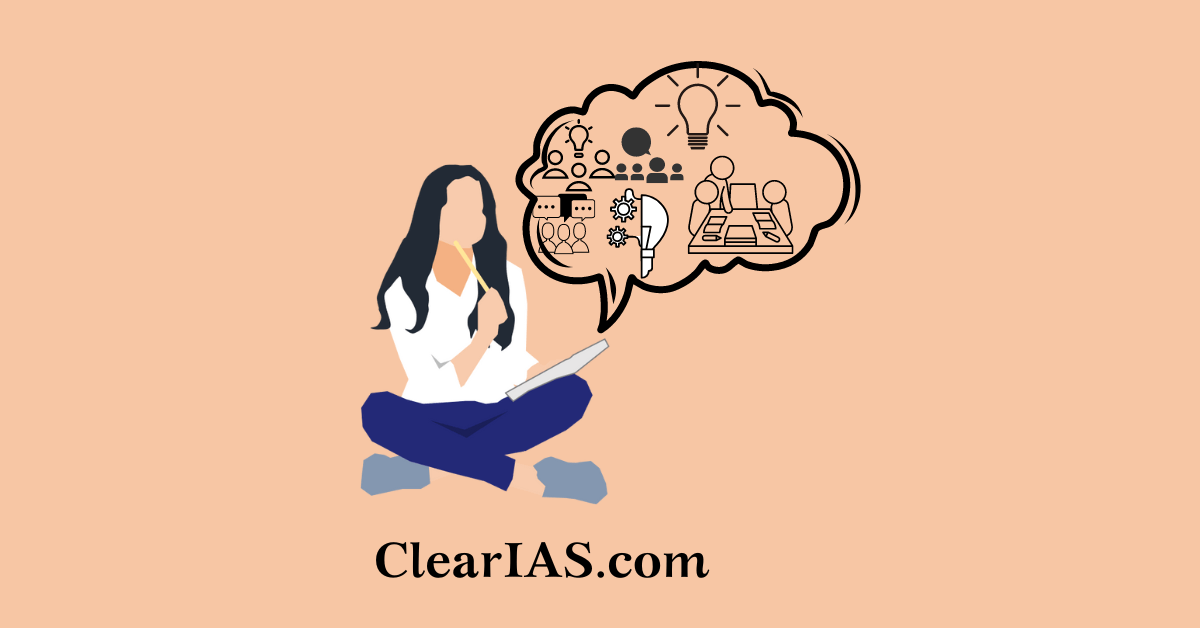 What is meant by logical reasoning and analytical ability? How to prepare logical reasoning and analytical ability for CSAT? Read to know more.
What is meant by logical reasoning and analytical ability? How to prepare logical reasoning and analytical ability for CSAT? Read to know more.
The UPSC Civil Services Aptitude Test (CSAT) is a critical component of the Civil Services Examination (CSE) designed to assess candidates’ logical reasoning and analytical abilities.
These skills are crucial for civil servants who need to analyze complex issues, make informed decisions, and solve intricate problems.
In this blog post, we’ll explore what logical reasoning and analytical ability entail and provide multiple-choice questions (MCQs) for each category to help you sharpen these skills for CSAT.
What is Logical Reasoning?
Logical reasoning involves the ability to think critically, identify patterns, draw conclusions, and make deductions based on information provided.
It requires a structured and systematic approach to problem-solving.
What is Analytical Ability?
Analytical ability refers to the capacity to break down complex problems into smaller components, examine them individually, and then synthesize the information to arrive at a comprehensive understanding or solution.
Analytical ability questions usually involve problem-solving with numbers, data, or abstract patterns.
Also read: CSAT Course: UPSC Prelims Paper 2 Program
Logical Reasoning MCQs
Syllogisms and logical reasoning questions test a candidate’s ability to think critically and analytically. In this section, we will provide a few multiple-choice questions with detailed solutions for practice in these areas.
Question 1:
All men are mortal. Socrates is a man. Therefore, what can we conclude about Socrates?
A) Socrates is mortal.
B) Socrates is not mortal.
C) It cannot be determined.
D) None of the above.
Correct Answer: A) Socrates is mortal.
Explanation:
Since the premise states that all men are mortal and that Socrates is a man, it logically follows that Socrates is mortal.
Question 2:
If every student who scored above 90% on the math test received a certificate, and Maria received a certificate, what can be concluded?
A) Maria scored above 90% in the math test.
B) Maria did not score above 90% in the math test.
C) It cannot be determined from the given information.
D) All students received certificates.
Correct Answer: C) It cannot be determined.
Explanation:
The statement “If a student scored above 90%, they received a certificate” tells us that being above 90% guarantees a certificate, but not that scoring below 90% excludes one. Maria’s receiving a certificate does not necessarily mean she scored above 90%. There could be other reasons for her receiving a certificate.
Question 3:
If A = 1, B = 2, C = 3, …, and Z = 26, what is the numerical value of the word “LOGIC”?
A) 33
B) 43
C) 46
D) 54
Correct Answer: C) 46
Explanation:
L = 12, O = 15, G = 7, I = 9, C = 3.
Sum = 12 + 15 + 7 + 9 + 3 = 46.
Assigning values to letters as per their position in the alphabet and adding them up yields 46.
Analytical Ability MCQs
Analytical ability refers to the set of skills and cognitive capacities that enable an individual to identify, assess, and solve problems efficiently and effectively.
Question 1:
Five friends—Alice, Bob, Carol, David, and Eve—sit around a round table. Everyone faces the center. If Alice is immediately to the left of David (counterclockwise from David) and Bob is immediately to the right of Carol (clockwise from Carol), who sits directly between Alice and Bob when moving around the table in the shortest path?
A) Carol
B) David
C) Eve
D) It cannot be uniquely determined
Correct Answer: C) Eve
Explanation:
(If we assume a correct seating arrangement consistent with the conditions, the shortest path from Alice to Bob around the table passes through Eve.)
Arranging the friends so that Alice is to David’s left and Bob is to Carol’s right leads to a configuration in which, when traveling the shortest route around the table from Alice to Bob, Eve is encountered between them. (Note: This relies on an arrangement consistent with the given constraints and the interpretation of “to the left” and “to the right” as immediate neighbors.)
Question 2:
In a group of 80 people, 45 like coffee, 50 like tea, and 20 like both coffee and tea. How many people do not like either beverage?
A) 5
B) 10
C) 15
D) 25
Correct Answer: A) 5
Explanation:
Number of people who like coffee or tea (or both) = 45 + 50 – 20 = 75.
Number who do not like either = 80 – 75 = 5.
Question 3:
Consider the sequence: 2, 5, 10, 17. Each term after the first is obtained by adding increasing odd numbers (3, then 5, then 7, etc.). What is the next number in the sequence?
A) 24
B) 26
C) 33
D) 40
Correct Answer: B) 26
Explanation:
The pattern starts at 2. Add 3 to get 5, add 5 to get 10, add 7 to get 17. The next addition is 9: 17 + 9 = 26.
Question 4:
A box contains 4 red balls, 3 green balls, and 5 blue balls. If one ball is drawn at random, what is the probability that it is not red?
A) 2/3
B) 1/2
C) 3/4
D) 8/12
Correct Answer: A) 2/3
Explanation:
Total balls = 4 (red) + 3 (green) + 5 (blue) = 12.
Non-red balls = 3 (green) + 5 (blue) = 8.
Probability = 8/12 = 2/3 .
How to study Logical Reasoning and Analytical Ability for CSAT?
Readers may note that this article on Logical Reasoning and Analytical Ability is just an overview of the topic. There is a lot more to learn about logical reasoning and analytical ability in the CSAT paper.
We recommend the below sources to learn the subject.






Leave a Reply